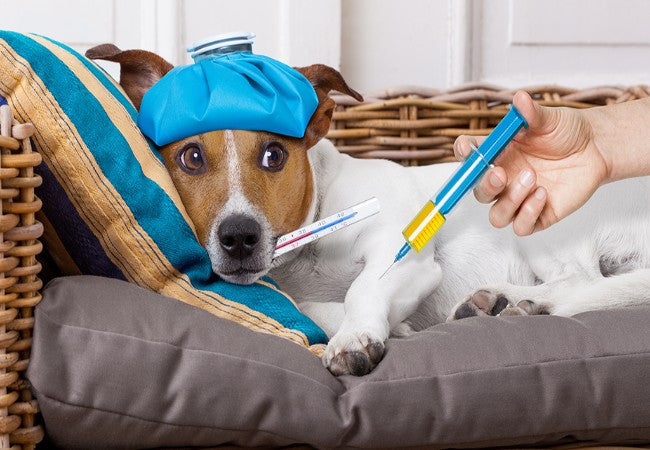Vet’s 2025 Guide to Canine Parvovirus Parvo Treatment & Prevention🩺

In this article
Vet’s 2025 Guide to Canine Parvovirus Parvo Treatment & Prevention🩺
By Dr. Duncan Houston BVSc
💡 Introduction
Canine parvovirus (CPV), commonly called “parvo,” is a highly contagious virus primarily affecting unvaccinated puppies and dogs. It attacks rapidly dividing cells—especially in the gastrointestinal tract and bone marrow—causing vomiting, diarrhea (often bloody), severe dehydration, and secondary infections. In severe cases, CPV can damage the heart in young puppies. In 2025, we’ve seen breakthrough progress—including the first USDA-approved monoclonal antibody therapy—for faster and more effective parvo treatment. This guide equips you with the latest in diagnostics, care, prevention, and recovery strategies. 🐶❤️
1. How Dogs Catch Parvo
- Transmission via ingestion of feces, contaminated surfaces, clothing, shoes—virus survives months outdoors and years indoors.
- Puppies aged 6–20 weeks are highest risk.
- All breeds are susceptible, with some, like Dobermans or Rottweilers more vulnerable to severe disease.
2. Symptoms & Progression
- Initial signs: lethargy, loss of appetite
- Severe vomiting and profuse, foul-smelling diarrhea, often with blood
- Dehydration, pale gums, rapid heart rate, fever, or hypothermia in advanced cases
- Profound leukopenia due to bone marrow suppression
3. Diagnosing Parvo in 2025
- Rapid fecal antigen tests are the typical first step; false negatives may occur early.
- PCR on feces or blood provides precise confirmation.
- Complete blood count reveals low white blood cells; chemistry panel assesses hydration and protein levels.
4. 2025 Treatment Protocols 🏥
4.1 Supportive Care (Standard of Care)
Cornerstone of treatment:
- IV or subcutaneous fluids to combat dehydration, restore electrolytes.
- Antiemetics (e.g., maropitant) to control vomiting.
- Broad-spectrum antibiotics to prevent secondary infections—common regimens include cefazolin, enrofloxacin.
- Colloids or plasma transfusions for protein loss or immune support.
- Nutritional support with bland, high-calorie diet once vomiting subsides.
4.2 Monoclonal Antibody Therapy (CPMA)
Introduced in 2023, this is a revolution in parvo care:
- One-time IV injection neutralizes the virus early.
- Field use shows 93% survival, with hospital stays ~1.9 days shorter.
- USDA-approved–first of its kind for viral therapy in dogs.
4.3 Experimental & Adjunctive Therapies
Some clinics use:
- Recombinant feline interferon‑omega to boost antiviral response .
- Potential future antivirals like nitazoxanide—still experimental.
5. Recovery & Prognosis
- With supportive care plus CPMA, survival rates exceed 90%.
- Puppies treated early often recover fully within 5–14 days.
- Without treatment, mortality may reach 90%.
6. Home & Post-Hospital Care
- Continue a bland diet, hydration monitoring, and medication adherence.
- Slow reintroduction to normal food over 1–2 weeks.
- Monitor stool consistency, energy, and appetite via the Ask A Vet app.
- Schedule follow-up bloodwork to check the recovery of immune and intestinal health.
7. Prevention & Biosecurity
- Puppy vaccination protocol starts at 6–8 weeks, continues every 2–4 weeks until at least 16 weeks .
- Boosters every 1–3 years thereafter.
- Avoid high-traffic dog areas until vaccination is completed.
- Environment disinfection with 1:30 bleach or commercial virucidal cleaners.
8. Ask A Vet Support 🩺
- 24/7 guidance on hydration, medications, and nutrition changes.
- Daily symptom logging and virtual check-ins during home recovery.
- Alerts if serious signs emerge—access to immediate vet advice and escalation.
- Reminders for vaccines and booster timing to keep pups protected.
🔍 Key Takeaways
- Parvo is highly contagious, life-threatening—but treatable in 2025 with advanced care.
- Supportive treatment remains core; monoclonal antibody therapy greatly improves survival and recovery time.
- Prevention via vaccination and disinfection is essential.
- Home monitoring and app-based support reinforce recovery and prevent complications.
🩺 Conclusion ❤️
Canine parvovirus poses a serious threat, especially to young and unvaccinated dogs. Thanks to supportive care protocols and the game-changing monoclonal antibody therapy (CPMA) introduced in 2023, outcomes in 2025 are more promising than ever. With timely action, vaccination, and ongoing support from Ask A Vet, most pups can recover fully and thrive. 🐾
Dr Duncan Houston BVSc – committed to providing compassionate, science-driven advice for every pet parent.
Learn more at AskAVet.com and download the Ask A Vet app for personalized guidance, treatment tracking, and ongoing puppy protection. ❤️






